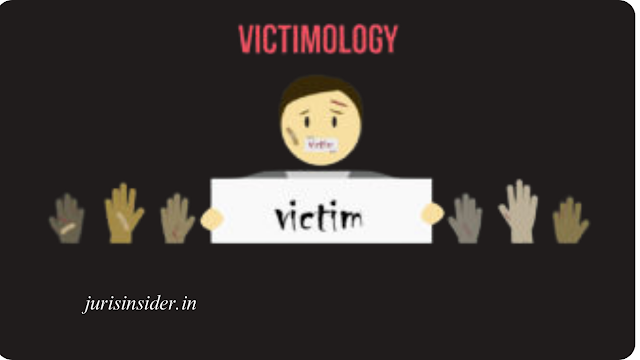What is Victimology
The concept of victimology has a longstanding presence within the field of criminology and related disciplines. It is worth noting that the term “scientific study of crime victims” was initially employed by Benjamin Mendelsohn in the year 1947. The subfield of victimology is commonly acknowledged within the realm of criminology, and it is worth noting that these two fields do exhibit significant areas of overlap. In a similar vein to the field of criminology, which focuses on the examination of offenders, their actions, and the corresponding responses of the criminal justice system, victimology pertains to the comprehensive study of individuals who have fallen victim to various forms of harm. Victimology, herein referred to as the discipline of study, pertains to the comprehensive examination of the etiology, or underlying causes, of victimization. Furthermore, it encompasses an analysis of the subsequent consequences arising from victimization, as well as an exploration of the manner in which the criminal justice system accommodates and provides assistance to victims. Additionally, Victimology is an academic field that examines the causes and consequences of victimization, the support provided to victims by the criminal justice system, and the portrayal of crime victims by the media and other societal elements. Victimology is an academic discipline that applies scientific methods to investigate inquiries pertaining to victims.
Who are Victims
The idea of a victim has its origins in ancient societies. The concept was associated with the idea of sacrifice. In its original meaning, a victim referred to an individual or creature that was sacrificed in a religious ritual with the intention of appeasing a supernatural force or deity. Throughout the course of history, the term has acquired supplementary interpretations. In legal terms, the term “individuals” is often used to describe people who have experienced injuries, losses, or hardships, regardless of the cause. Individuals may find themselves in unfortunate circumstances due to accidents, natural disasters, diseases, or social issues like warfare, discrimination, political witch hunts, and other forms of injustice. These victims suffer harm as a result of unlawful actions.
Concept of Victimization
Victimization is an asymmetrical interpersonal relationship that is abusive, painful, destructive, parasitical, and unfair. During the commission of a crime, perpetrators may compel their victims to assume specific roles that resemble the interactions between predator and prey, winner and loser, victor and vanquished, and even master and slave. Throughout history, various forms of victimization have been deemed illegal. These include specific acts of oppression and exploitation, such as rape, robbery, and fraud. However, it is important to note that not all forms of harmful relationships and deceptive practices are illegal. Under current legal regulations, it is generally not considered permissible to engage in practices such as overcharging customers for items that can be purchased for less elsewhere, underpaying workers who could earn higher wages elsewhere, imposing exorbitant interest rates and hidden fees on borrowers, or denying basic necessities to individuals who cannot afford them. These actions may be subject to legal consequences and are often regulated by consumer protection laws, labour laws, usury laws, and social welfare policies.

Definition of Victimology
Victimology is the scientific study of victims of crime, including their experiences, the impact of victimization on their lives, and the ways in which society responds to and treats victims. It is an interdisciplinary field that combines elements of sociology, psychology, criminology, and other social sciences to understand the dynamics of victimization.
Victimology, as a discipline, encompasses the systematic examination and analysis of the various forms of physical, emotional, and financial harm that individuals may suffer as a direct consequence of unlawful actions. Victimologists, as their primary focus, engage in the examination of the victims’ circumstances, specifically delving into the repercussions of the harm and damages caused by perpetrators upon the individuals they intentionally select as targets. Furthermore, it is incumbent upon them to diligently engage in comprehensive investigations pertaining to the populace’s political, social, and economic responses vis-à-vis the affliction endured by the affected parties. The researchers also engage in the examination of the manner in which victims are treated by various officials and entities operating within the framework of the criminal justice system. This includes a particular focus on the dynamics of interactions between victims and individuals such as police officers, detectives, prosecutors, defense attorneys, judges, probation officers, and members of parole boards.
Types of victims in victimology
According to Mendelsohn, the victims are six types :
- completely innocent victims,
- victims with minor guilt,
- victims as guilty as the offender.
- victims guiltier than the offender,
- most guilty victim and
- imaginary victims.
Mendelsohn then investigated the extent to which this classification of victims can diminish the criminal culpability of the perpetrator. Apart from the first group of victims, all other individuals were seen as participants in criminal victimization. As a result, their entitlement to compensation and restorative justice would be affected.
Simultaneously, German criminologist Hans Von Hentig highlighted the responsibility of victims and introduced a more extensive classification of victims based on their gender, age, psychological factors, and their position in the geopolitical and social context in which they were living when they experienced victimization. Consequently, his classification system encompasses 13 distinct categories of victims, which are as follows:
- the young;
- the female;
- the old;
- the mentally defective and deranged;
- immigrants;
- minorities;
- the dull normal;
- the depressed;
- the acquisitive;
- the wanton;
- the lonesome and the heartbroken;
- the tormentors; and
- the blocked, exempted, or fighting.
On the other hand, victims can be categorized as primary victim, secondary victim, and tertiary victim.
Primary Victim: A primary victim refers to any individual, collective, or organization that has experienced hurt, harm, or loss as a direct result of the unlawful actions of another party. The injury might manifest in physical, psychological, or financial forms.
Secondary Victims: There may also be additional individuals who experience injury or harm as a result of the injury or harm inflicted upon the primary victim.
Tertiary Victim:
Individuals who suffer harm or injury as a result of a criminal act committed by someone else are considered tertiary victims. There is another individual, in addition to the immediate victim, who becomes a victim due to the actions of the perpetrator.
For instance, in situations involving rape, the woman who has been raped is considered the primary victim. On the other hand, any child born as a result of such a traumatic event can be seen as a secondary victim, as they may face challenges related to their paternity. However, the societal and systemic repercussions place an additional burden on the family of the victim, causing them to suffer shame and disgrace. It should not be assumed that secondary and tertiary victims are any less traumatized than the primary victims.
Key Aspects of Victimology
Understanding Victimology: Victimology is an interdisciplinary field that draws from various disciplines, including psychology, sociology, criminology, and law. It seeks to understand the dynamics of victimization, the factors that make individuals more vulnerable to crime, and the consequences of victimization.
Types of Victims: Victimology examines different types of victims, such as direct victims who experience a crime firsthand, secondary victims who are affected indirectly (e.g., family members of crime victims), and even tertiary victims who may be impacted by the consequences of a crime (e.g., communities affected by high crime rates).
Victim-Offender Relationship: Researchers in victimology explore the relationships between victims and offenders, including patterns of victim-offender interaction, the role of acquaintanceship or stranger victimization, and how these relationships influence the victim’s experience.
Victim Characteristics: Victimologists study various victim characteristics, including age, gender, race, socioeconomic status, and lifestyle factors, to better understand why certain individuals or groups may be more vulnerable to victimization.
Victim Impact: One of the central concerns of victimology is assessing the physical, emotional, and financial impact of victimization on individuals and their families. This includes understanding the trauma, fear, and psychological consequences that victims may experience.
Victim Services and Support: Victimology plays a role in advocating for victim rights and the development of support services, such as victim compensation programs, counseling, and legal advocacy, to help victims cope with the aftermath of crime.
Restorative Justice: Victimology also explores restorative justice principles, which aim to involve victims in the criminal justice process, promote healing and reconciliation, and hold offenders accountable for their actions.
Public Policy and Advocacy: Victimologists often engage in research and advocacy to influence public policy related to victim rights, crime prevention, and the criminal justice system’s response to victims.
Overview
In the broader context, it is imperative to acknowledge the pivotal significance of victimology in the realm of promoting consciousness regarding the encounters endured by victims, enhancing the provision of support services to victims, and exerting influence on procedures and regulations within the criminal justice system with the aim of more effectively catering to the requirements of victims.
References
Karmen, A.(2015), Crime victims An introduction to victimology, Cangage
Austin, D. (1987), The crime victim’s handbook, New Yowrk: Penguin.
International handbook of victimology edited by Shlomo Giora, Paul Knepper, Martin Kett.
J. Wilson (Ed.),The Praegerhandbook of victimology, CA: Praeger

Thanks for the short but useful essay. Please keep posting short articles on various legal topics.
Thanks, only with this I m gonna write my exam tomorrow 🤪
Dear Durai,
Thanks for your comment on our post. We’re glad you found it helpful for your exam preparation. We appreciate your support and hope you’ll continue to find value in our content.
Best regards,
JurisInsider Team